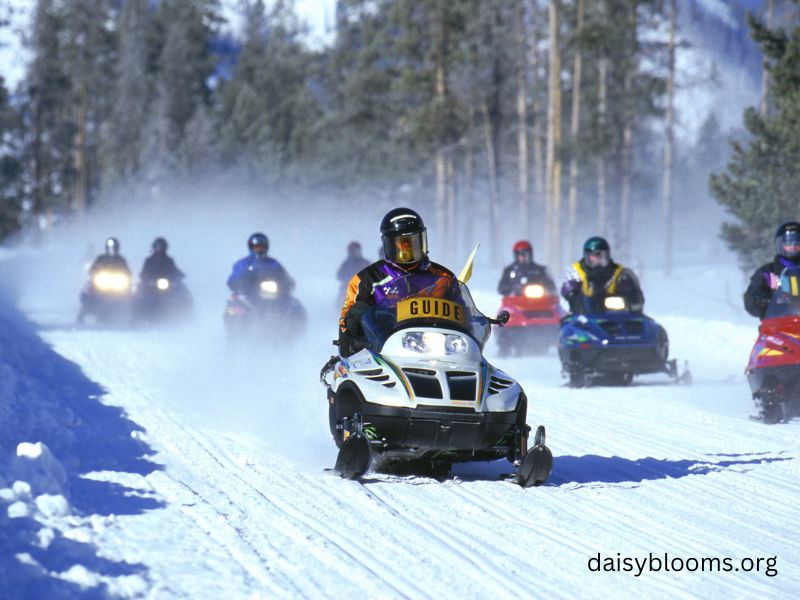In January 2008, snowmobile accident in Russia drew widespread attention due to its severe consequences and the tragic loss of life involved. Snowmobiling, a popular recreational activity in the snow-covered regions of Russia, carries inherent risks. This incident, which occurred under the harsh winter conditions, exemplified those dangers. Let’s delve into the details of the accident, the response, and the impact it had on snowmobiling safety awareness.
Overview of the Accident
The accident occurred in a remote area of Russia, known for its vast snowy landscapes and extreme winter conditions. While snowmobiles are a common mode of transport in these regions, the terrain and weather can pose significant challenges to riders, especially in less accessible areas. On that fateful day, a group of individuals was involved in a snowmobile accident that resulted in fatalities. The specific details of the crash remain unclear in some accounts, but it is known that the severe weather conditions contributed to the tragedy.
Contributing Factors to the Accident
Several factors contributed to the snowmobile accident in Russia. Snowmobiling, while exciting, is a high-risk activity, particularly in areas with extreme weather, deep snow, and difficult terrain. High speeds, loss of control, and poor visibility in snowstorms are all major contributors to accidents. In this instance, it is believed that the riders encountered treacherous conditions, such as deep snowdrifts and low visibility, which likely led to the crash.
Another critical factor is rider experience. Like any motorized vehicle, snowmobiles require a certain level of skill and knowledge to operate safely. The lack of experience among some of the riders involved in the 2008 accident could have been a contributing factor to the tragedy. Riders unfamiliar with the specific terrain and weather conditions are at greater risk of losing control, particularly when navigating through unfamiliar and hazardous areas.
Response to the Incident
Following the January 2008 snowmobile accident, emergency response teams were quickly mobilized to the site of the crash. Given the location in a remote area, it took some time for rescuers to reach the scene. The accident highlighted the challenges of providing emergency services in areas that are difficult to access due to snow and ice. In the aftermath, Russian authorities took steps to investigate the incident thoroughly and improve safety protocols for snowmobile use in the region.
In the years following the tragedy, efforts were made to raise awareness about snowmobile safety, including campaigns aimed at educating riders on the dangers of speeding, the importance of using safety equipment, and the need to be cautious when operating in extreme conditions. Local authorities also began enforcing stricter regulations on snowmobile rentals and usage, aiming to reduce the number of accidents in these harsh environments.
Snowmobiling in Russia: A Popular But Risky Activity
Russia’s vast and varied terrain, particularly in its northern and Siberian regions, makes it a prime location for snowmobiling. The country has a long history of snowmobile use, not only for recreation but also for transportation in remote areas. However, with the increasing popularity of snowmobiling, accidents have become a growing concern. The tragic incident in January 2008 brought attention to the need for better safety measures, more thorough training, and more robust safety equipment.
Snowmobiling is often seen as an exciting and adrenaline-pumping activity, but it is important to acknowledge the risks involved. According to various reports, snowmobile accidents are a common cause of injury and death in cold, snowy regions. In fact, Russia ranks among the countries with a high rate of snowmobile-related accidents.
Lessons Learned and Safety Measures
The January 2008 snowmobile accident in Russia serves as a stark reminder of the importance of safety in winter sports. In the wake of such incidents, both government and recreational organizations have emphasized the importance of training and safety measures for snowmobilers. Helmet usage, weather awareness, proper equipment maintenance, and adherence to speed limits are crucial in preventing accidents.
Efforts have been made to improve snowmobile safety through public education campaigns and the introduction of more stringent regulations. For example, snowmobile operators are now encouraged to undergo safety courses before taking their vehicles into remote areas. Furthermore, the use of modern snowmobiles equipped with advanced safety features has been promoted. These new vehicles come with features designed to enhance rider control, such as better suspension systems and automatic brakes, which can help reduce the risk of accidents.
The Aftermath and Impact on the Snowmobiling Community
The aftermath of the January 2008 snowmobile accident in Russia also saw a shift in the snowmobiling community’s approach to safety. While snowmobiling remains a popular activity, it has also become more regulated and closely monitored. The Russian government, along with snowmobile manufacturers and local authorities, has worked to improve the safety of the sport by introducing new regulations aimed at reducing fatalities and injuries.
Additionally, local communities have become more proactive in promoting snowmobile safety. Snowmobile clubs and associations now hold regular safety workshops and training sessions for both experienced and novice riders. These programs focus on educating riders about the dangers of snowmobiling and how to safely navigate the snowy terrain.
Conclusion
The January 2008 snowmobile accident in Russia was a tragic event that highlighted the risks associated with snowmobiling in extreme conditions. However, it also served as a catalyst for increased safety awareness and improvements in snowmobile regulations and training. By learning from past incidents, Russia and other snowmobiling communities worldwide have taken steps to make snowmobiling safer for everyone. As a result, snowmobilers are now better equipped to navigate the challenging winter environments, ensuring that such accidents are less likely to occur in the future.
This event underscores the importance of vigilance and preparation when engaging in winter sports, particularly those that involve powerful, fast-moving vehicles like snowmobiles. With continued emphasis on safety, it is hoped that snowmobile accidents like the one in January 2008 will become increasingly rare.


